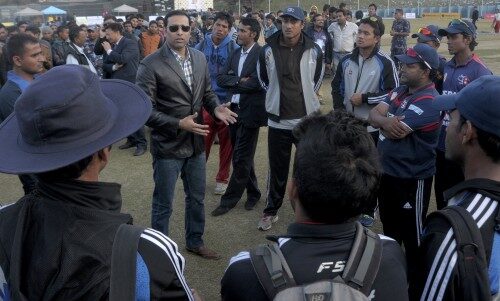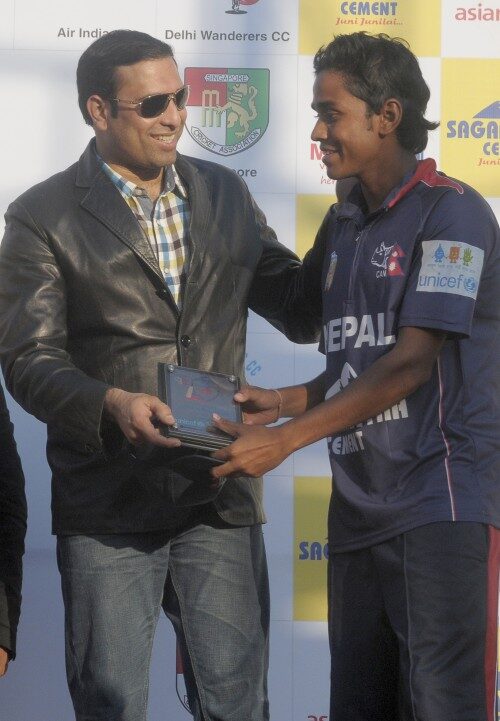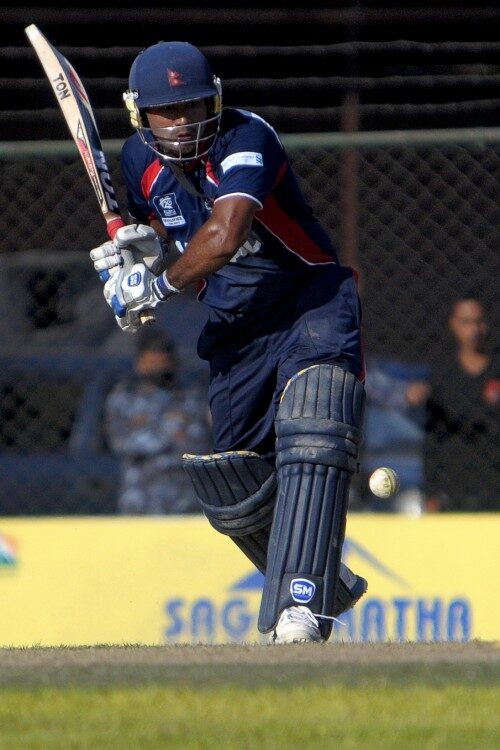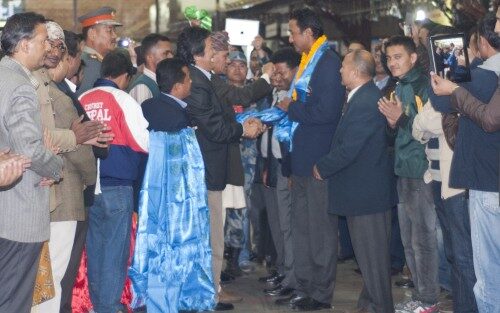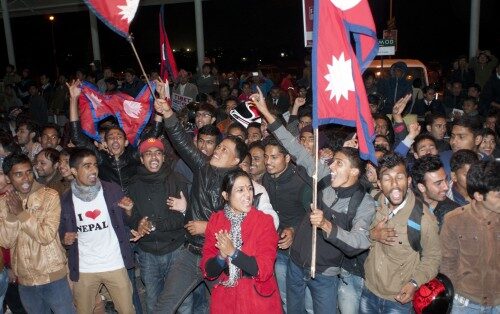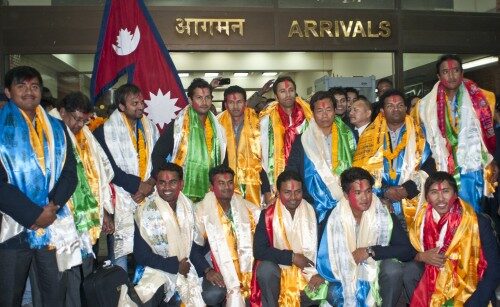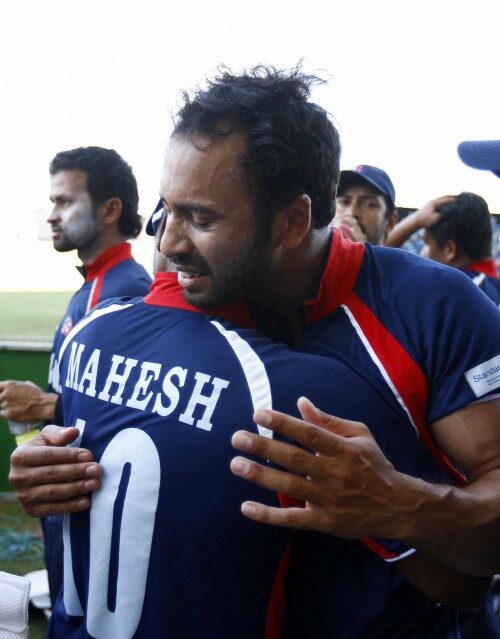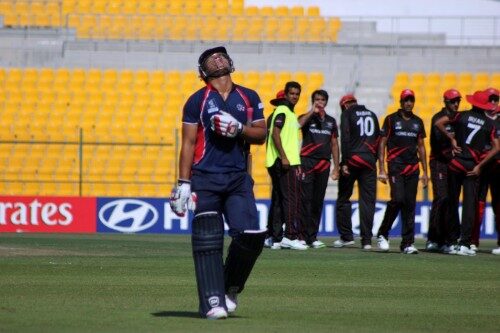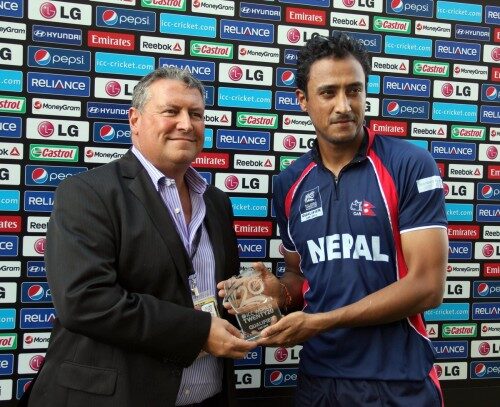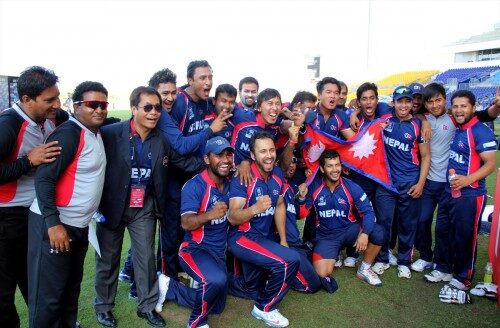Nepal witnessed its biggest success in sports history, when the Nepal cricket team made it to the World T20, the shortest format of Cricket World Cup, defeating Hong Kong in the ICC World T20 Qualifiers.
The match was witnessed by thousands of Nepali fans on television in Nepal. The achievement is laudable as it has come merely 17 years after Nepal started playing international tournaments.
Nepal overcame a big hurdle, entering the World Cup, to the excitement of all who follow the game. But the road ahead is likely to be challenging. The team will now be facing bigger teams, which are better equipped, both technically and skill-wise. Nepal must prepare hard to take on the stronger sides like Bangladesh or Zimbabwe in the group stage of World T20.

Himali Khadka, mother of Sharad Veshwakar, and other cricket lovers lights oil lamp at Pashupati to celebrate and pray for Team Nepal.
Nepal qualified for the ICC World T20, beating Hong Kong by five wicket in ICC World T20 Qualifiers match in Abu Dhabi on Wednesday, 27th November.
Photo: Bikash Karki
All the qualified six teams will be pitted alongside either Bangladesh or Zimbabwe in the group round. Only the top two among them will get to play with teams like Sri Lanka, England, South Africa, New Zealand, West Indies, India, India, Pakistan and Australia.
“Given the facilities provided to Nepali cricketers, the achievement is outstanding,” said Pawan Agrawal, former Nepal skipper. “Now, the biggest challenge will be to maintain the standard after achieving this height.”
General Secretary of Cricket Association of Nepal (CAN) Ashok Nath Pyakurel also agrees with Agrawal. But he says it can be sorted out by giving more exposure to the team.
“Our immediate plan is to take steps to motivate players.
We will announce this shortly. We will arrange for more international exposure with better teams. We are going to field the national team in 50-over tournament “Journey to World Cup”. Besides, we are also planning to take the team abroad for practice matches with stronger sides,” said Pyakurel.
Nepal´s infrastructure is not on par with any other country that has qualified for the World T20. Nepal boasts of a single international stadium in Kirtipur and that too is short of basic facilities.
Agrawal stressed the need for better management of the game. ´There should be a rapid change in the domestic structure of cricket. Infrastructure needs to be developed and plans made for skill development. The concept of academy is vital for skill development,” suggested Agrawal.
Pyakurel said the focus should be on infrastructure development, but says CAN cannot take on the challenges alone. “CAN can not maintain the status Nepali cricket has achieved alone. We will request the government to accord special priority to construction of an indoor training center immediately,” Pyakurel said, attributing lack of resources as reason for fewer domestic tournaments.
Meanwhile, Sanjam Regmi, who was part of the team before being left out due to eye infection holds a different view. He stressed the need for commercialization of cricket.
“There are no more than 25 established players for the competitive tournaments. Corporate houses should form their own teams. Currently, Nepali cricket players have fame but no financial assurance,” Regmi said.
“There have been few changes with corporate houses rewarding players since 2010. But that is not enough,” Regmi said.“Generally, corporate houses promise conditional rewards for special performance. But that has to be unconditional. Players should get motivational incentives without any condition.
Nepali team has proved its mettle by making it to World T20,” said Regmi.
Besides, Nepal will have to switch its game immediately from the 50-over format to 20-over format for the World T20. Just before heading for Bangladesh for World T20, Nepal will be playing Cricket World Cup Qualifiers, which is a 50-over format, in January and February in New Zealand.
Ed: This write-up appeared in Republica, as ‘Story of the Week’, written by Prajwal Oli








